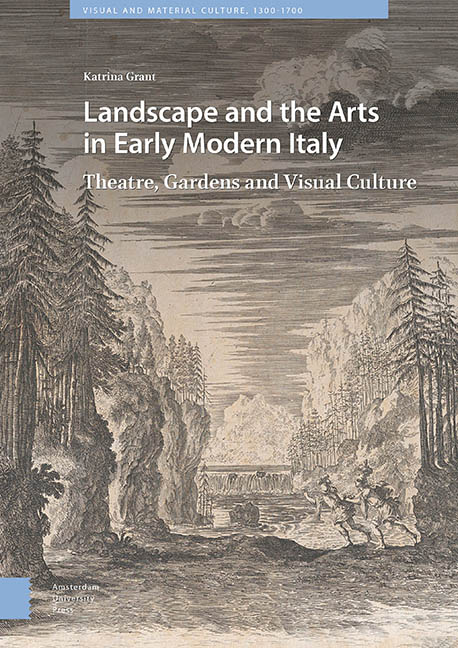Book contents
- Frontmatter
- Contents
- Acknowledgements
- Introduction
- 1 Theatricality, a View from the Landscape
- 2 Gardens of the Gods : Classical Revival, Intermedi, Early Opera and the Idea of Nature
- 3 The (Singing) Figure in the Landscape
- 4 Triumph over Nature : Machines and Meraviglia on the Seventeenthcentury Stage
- 5 The Theatre in the Landscape : Pliny to Pratolino
- 6 The Garden as Stage, the Visitor as Performer
- 7 Stages without Actors : Theatres of Sculpture, Water and Flowers
- 8 Performing in the Parrhasian Grove : Green Theatres and the Academies
- Bibliography
- Index
1 - Theatricality, a View from the Landscape
Published online by Cambridge University Press: 15 September 2022
- Frontmatter
- Contents
- Acknowledgements
- Introduction
- 1 Theatricality, a View from the Landscape
- 2 Gardens of the Gods : Classical Revival, Intermedi, Early Opera and the Idea of Nature
- 3 The (Singing) Figure in the Landscape
- 4 Triumph over Nature : Machines and Meraviglia on the Seventeenthcentury Stage
- 5 The Theatre in the Landscape : Pliny to Pratolino
- 6 The Garden as Stage, the Visitor as Performer
- 7 Stages without Actors : Theatres of Sculpture, Water and Flowers
- 8 Performing in the Parrhasian Grove : Green Theatres and the Academies
- Bibliography
- Index
Summary
Abstract
This chapter explores the problem of how to disentangle our modern ideas of ‘theatre’ and ‘theatricality’ from those relevant to the seventeenth century. It asks what is meant when we describe a garden as theatrical? And, how did the ‘theatricality’ of a place affect the way in which people experienced them?
Keywords: Theatre, Art, Gardens, Theatricality
The term ‘theatrical’ is used frequently in descriptions of life and art in the seventeenth and eighteenth centuries, in catalogues of art exhibitions, academic texts, and descriptions of the period in popular culture. The term seems to have become indispensable in attempting to capture and convey the convergence of art, society, and performance in Europe across the long seventeenth century. However, just like the popular period designation ‘baroque’, ‘theatrical’ is a loaded term. It can be a useful one and, as this book will aim to demonstrate, in many cases an apt one. But it is also a term that requires critical deconstruction and analysis. What does ‘theatrical’ mean? What does it describe? And why is it apparently more present in the art and culture of the baroque period than, for example, in the Renaissance, which also had a keen interest in the production of theatre and theatrical spectacles? The following chapter examines the current scholarship on the relationship between theatre and visual culture during this period and considers the problem of how to disentangle our modern ideas of ‘theatre’ and ‘theatricality’ from those relevant to the seventeenth century.
The Problem with Theatricality
The challenge of untangling the intricate and fluid relationship between theatre, art, and the observation of society have been explored by several scholars. A useful place to start is with Keith Christiansen's explanation of the ‘notion of theatricality’ in the work of Tiepolo. He writes that, ‘[i]n discussing the work of Giambattista Tiepolo it has become commonplace to employ terminology that suggests some kind of affinity between his paintings and the stage’. Christiansen observes two distinct intentions behind the use of this language. The first is analogy, to describe Tiepolo's Würzburg frescoes as theatrical because they are framed by drawn-back curtains in stucco is to suggest their visual similarity to scenes upon a stage.
- Type
- Chapter
- Information
- Landscape and the Arts in Early Modern ItalyTheatre, Gardens and Visual Culture, pp. 17 - 44Publisher: Amsterdam University PressPrint publication year: 2022



